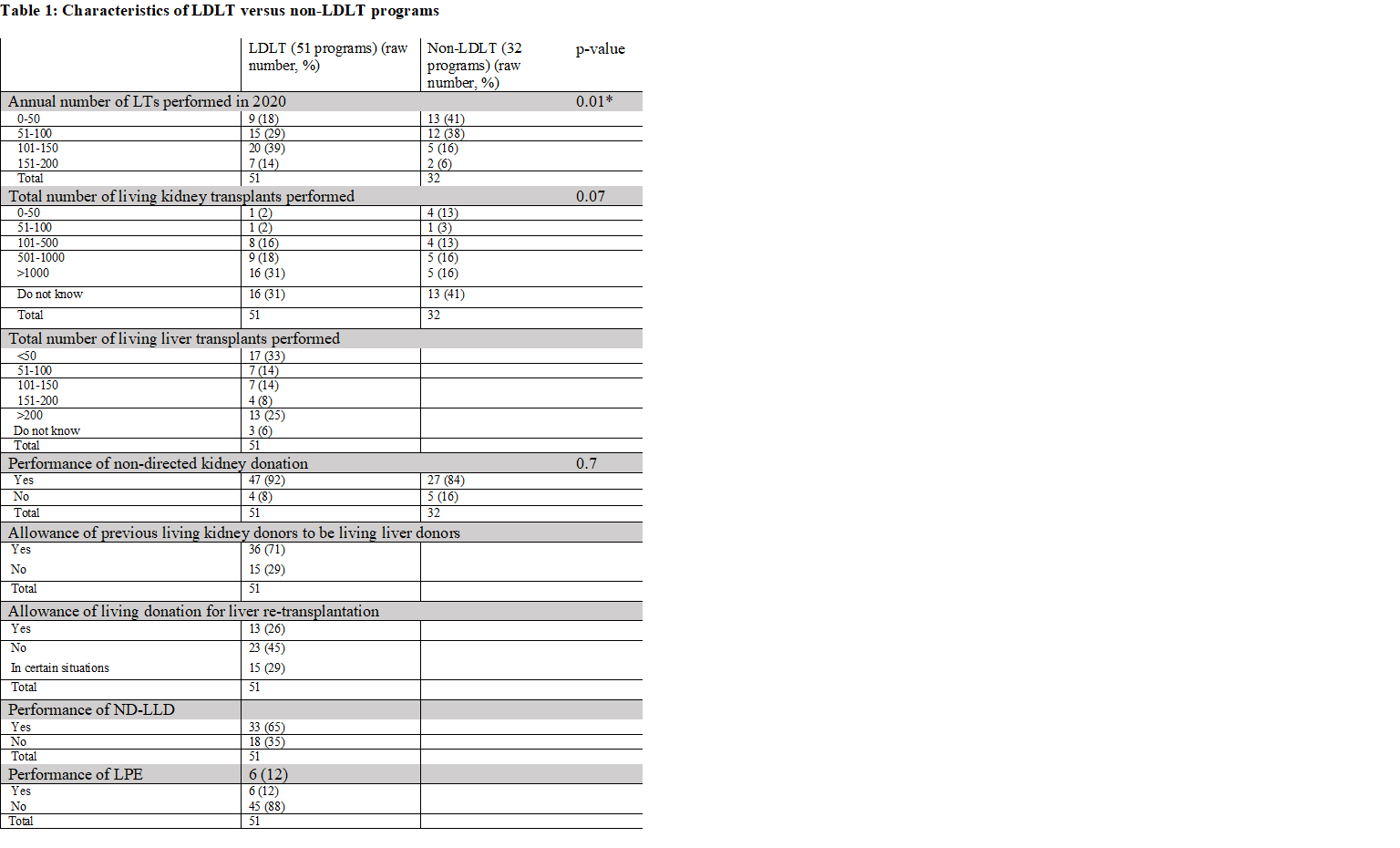Practices and Perceptions of Living Donor Liver Transplant, Non-Directed Donation, and Liver Paired Exchange: A National Survey
A. Kaplan1, R. Rosenblatt1, W. Jackson2, R. Brown1, B. Samstein1
1New York Presbyterian Weill Cornell, New York, NY, 2University of Colorado Denver, Denver, CO
Meeting: 2022 American Transplant Congress
Abstract number: 894
Keywords: Donation, Liver, Liver transplantation, Living donor
Topic: Clinical Science » Liver » 59 - Liver: Expanding the Donor Pool* (Liver: MELD Allocation / Donor Issues)
Session Information
Session Name: Liver: Expanding the Donor Pool* (Liver: MELD Allocation / Donor Issues)
Session Type: Poster Abstract
Date: Saturday, June 4, 2022
Session Time: 5:30pm-7:00pm
 Presentation Time: 5:30pm-7:00pm
Presentation Time: 5:30pm-7:00pm
Location: Hynes Halls C & D
*Purpose: Living donor liver transplant (LDLT) remains under-utilized in the United States. The aim of this study, therefore, was to assess the perceptions and practices of 1) LDLT across all transplant centers and 2) non-directed living liver donation (ND-LLD) and liver paired exchange (LPE) at LDLT programs.
*Methods: The medical and surgical directors of 99 unique transplant programs (56 LDLT programs and 43 non-LDLT programs) were surveyed to gain insight into perceptions and practices of LDLT and types of donors utilized. Survey responses were coded and analyzed using STATA. Pearson’s chi-square test was used to compare categorical variables.
*Results: The response rate was 84%–83 total programs participated (See Figure for comparisons of LDLT and non-LDLT programs). There were significant differences between LDLT and non-LDLT programs with regard to perceived barriers to LDLT with LDLT programs reporting mainly donor and recipient factors and non-LDLT programs reporting institutional factors (p<0.001). Programs that performed over 100 total liver transplants in 2020 were significantly more likely to have performed LDLT. Most LDLT programs (65%) reported performing ND-LLD, though opinions regarding allocation and the need for additional evaluation of these donors were mixed. Only a minority of LDLT programs reported performing LPE (12%), but most programs (78%), would be open to cross-institutional LPE barring logistical barriers.
*Conclusions: LDLT can fill the gap in the national organ supply and the demand for liver transplantation with excellent outcomes. In order to realize this potential, candidates need access to centers with LDLT expertise. This can be accomplished by increasing both surgical training and institutional support and by advocating for vulnerable recipients or donors. ND-LLD and LPE have broad acceptance at centers with LDLT experience but are still not widely performed. Standardization of the evaluation and allocation process of non-directed donors and policies for LPE are needed to help expand their utilization.
To cite this abstract in AMA style:
Kaplan A, Rosenblatt R, Jackson W, Brown R, Samstein B. Practices and Perceptions of Living Donor Liver Transplant, Non-Directed Donation, and Liver Paired Exchange: A National Survey [abstract]. Am J Transplant. 2022; 22 (suppl 3). https://atcmeetingabstracts.com/abstract/practices-and-perceptions-of-living-donor-liver-transplant-non-directed-donation-and-liver-paired-exchange-a-national-survey/. Accessed December 24, 2025.« Back to 2022 American Transplant Congress

